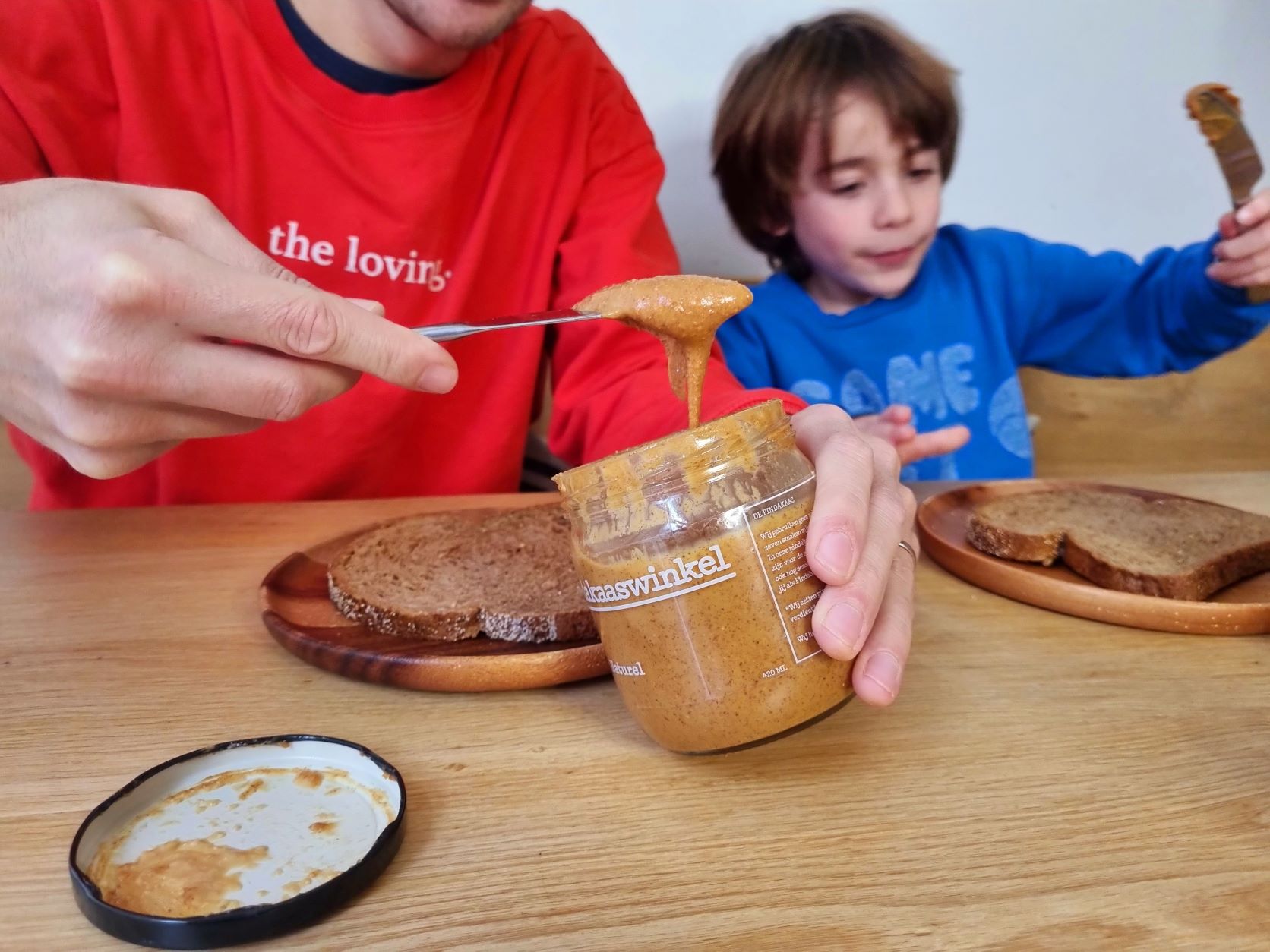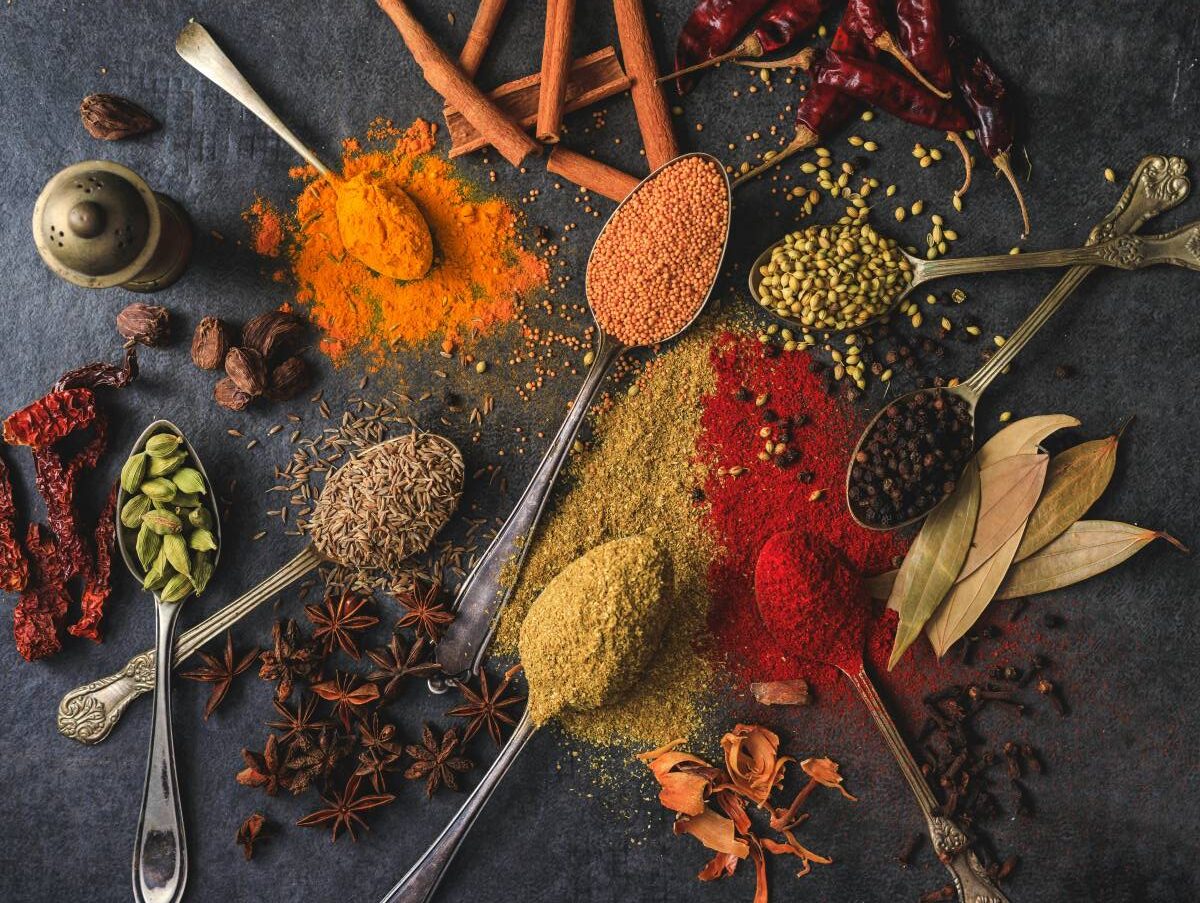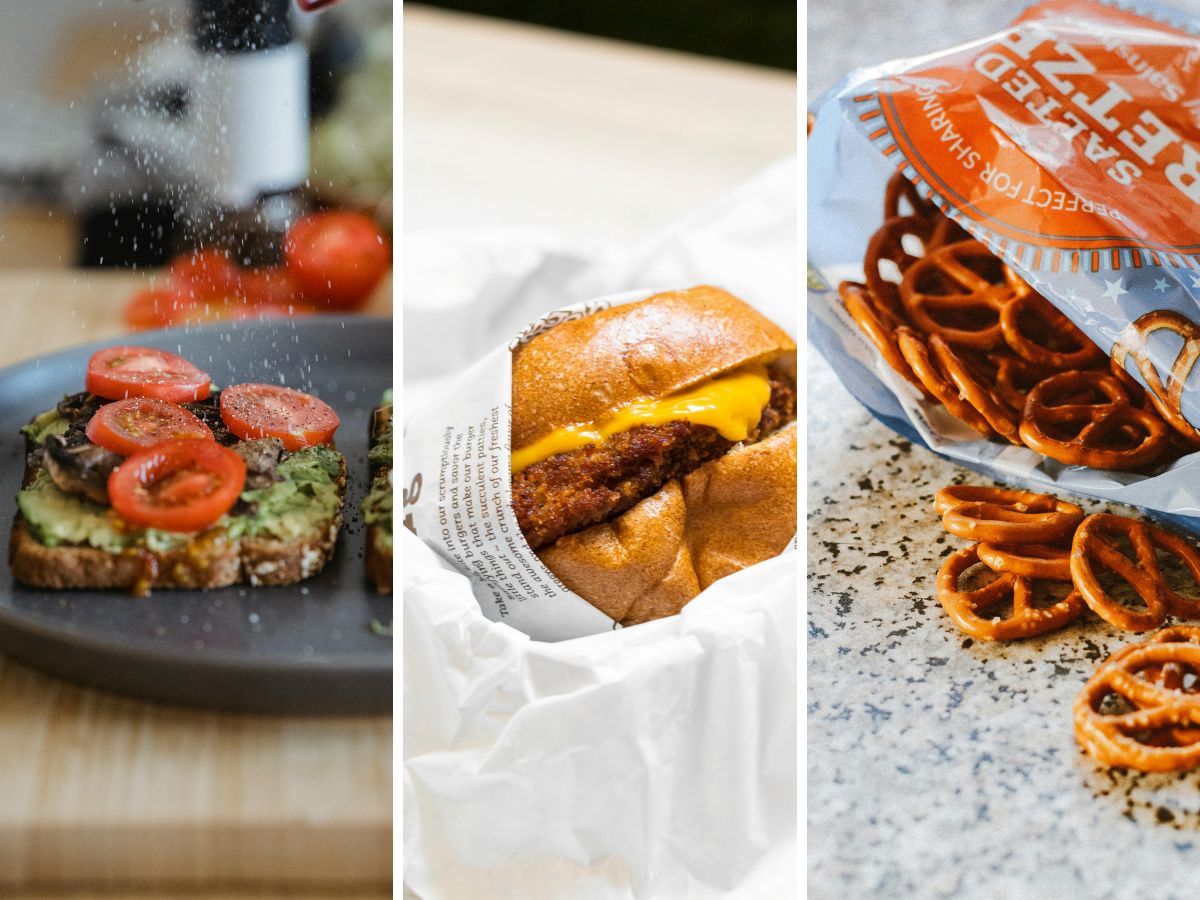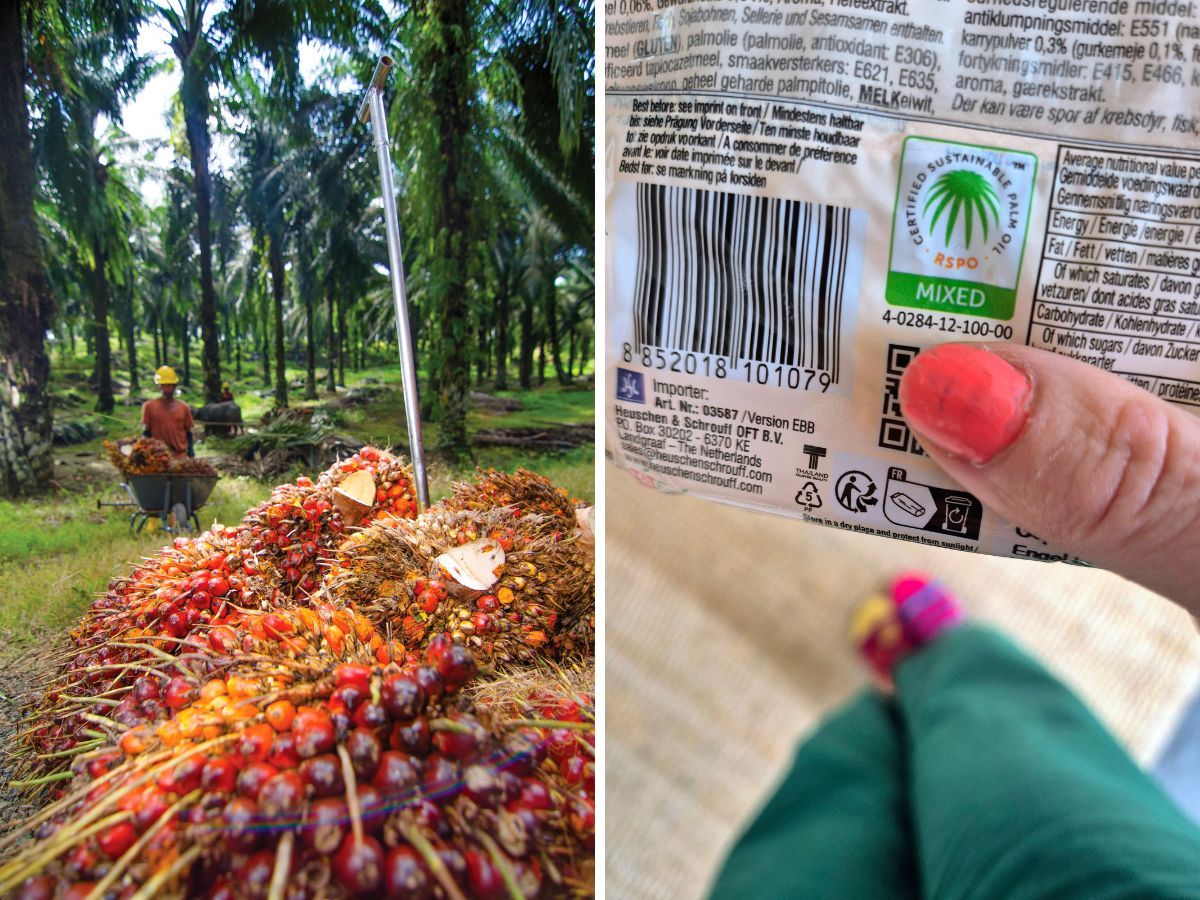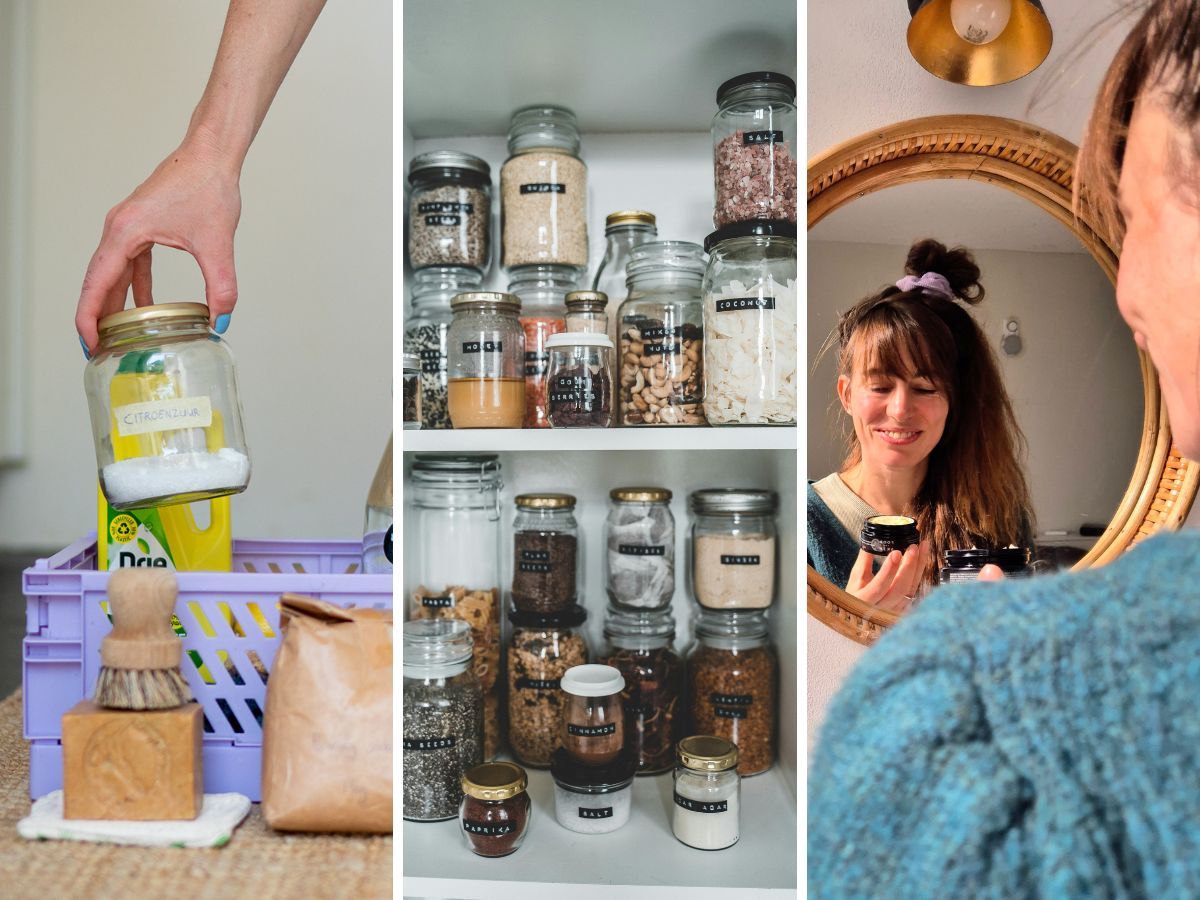At our At home, every day is National Peanut Butter Day, and so we asked ourselves: which sustainable peanut butter is the tastiest and what are the differences in terms of sustainability and taste? We put out a survey on Instagram, arranged the top eight sustainable peanut cheeses for a peanut butter test And the test panel got to work!
What's in a jar of peanut butter?
Peanut butter, who hasn't grown up with it? We Dutch love peanut butter, but what is actually in a jar of peanut butter? The main ingredient is - you guessed it - peanuts. So how many differences can there be you might think... Time to investigate. By the way, did you already know that a peanut is not a nut but a legume? Furthermore, peanut butter often has some salt added to flavour it and a bit of oil and/or fat to make it nice and creamy and spreadable. Other than that, there is very little in it. So peanut butter is pretty pure.
As part of National Peanut Butter Day, I did a little research and taste test with my test panel (husband and child). A tip of the hat: so there are indeed differences: in taste and texture, but also in ingredients and the sustainable properties differ from brand to brand.
New peanut butter discovered!
What I really like about this peanut butter test is that I have discovered new peanut butter brands that I did not know at all before this. These are all small, artisanal peanut butter makers with a great love for beautiful peanut cheeses made from honest ingredients.
Sustainable or organic peanuts?
Most peanut butter brands use either sustainable or organically grown peanuts. And that immediately makes it quite confusing: because sustainable is therefore different from organic. For instance, Calvé peanut butter contains sustainable peanuts that are not (necessarily) organic, whereas in my test I also came across artisanal peanut cheeses with organic and even biodynamic peanuts as the main ingredient. To better understand the difference between organic, biodynamic and sustainable, I have briefly listed it.
Organic farming is a form of agriculture that takes environmental impact and animal welfare into account. In organic farming no (chemical) pesticides, fertiliser and genetically modified organisms are used. Animals are given more space and can display their natural behaviour. You can easily see whether organic peanuts have been used on the label. This is always mentioned or it is even certified with the organic label.
The criteria for sustainable agriculture are broader than those for organic farming. Sustainable agriculture focuses on both the environment and climate as well as the living standards of the people working on the plantations. Looking wider is always good, of course, but there is no specific label for this, which can make it feel a bit more abstract and vague.
Biodynamic agriculture complies with organic farming rules, but goes a step further. Biodynamic farms have additional standards imposed on fertilisation, animal welfare and substances allowed in processing.
Organic and biodynamic farming are not automatically better for the climate. On the contrary, it may be that a non-organic farmer has a more efficient method, thus yielding more per hectare and thus putting less strain on the planet. Complicated? Yes quite. And so, like everything with sustainability, it's not so black and white. Not even with the sustainable cultivation of the peanuts in your peanut butter.


Organic peanut butter.
Palm oil-free peanut butter?
Peanut butter contains vegetable oil. Usually, this is palm oil. And yes, there is a lot to do about palm oil. The establishment of palm oil plantations is often accompanied by substantial deforestation. Every day, precious virgin forest is still being cut down to make way for palm oil plantations. These are forests we need precisely to stop global warming and preserve biodiversity. The palm oil sector is also known for abuses towards people working for the palm oil companies or living in the region. So palm oil is not so pretty. So quitting palm oil is the first thing that comes to mind right?
If only it were that simple, of course, we would have done it a long time ago. A lot of products contain vegetable oil. We cannot do without it at all. Choosing alternatives, such as coconut oil, shea butter and sunflower oil, is not a solution either. Because they often require more agricultural land and sometimes a lot goes wrong on those plantations. So stopping using palm oil is not only impossible, it is also not smart. Because palm oil is super-efficient, we can produce a lot of palm oil with relatively little land. The solution (for now) is to make that palm oil industry sustainable and monitor it. A hallmark has also been established for this purpose (RSPO). Want to know more about palm oil? We have written extensively about it.
So while all peanut butter brands in the test are palm oil-free (except one), this is not a sustainable criterion as far as we are concerned. As far as we are concerned, a peanut butter that uses certified palm oil can still be a good choice.
Tip for those who spread palm oil-free peanut butter
With palm-oil-free peanut butter, it is more likely that an oil layer may float on the peanut butter. You can prevent this by keeping the peanut butter in the fridge and stirring it before use. If the peanut butter has dried out a bit, heating it briefly (in the microwave or in a pan) can help. Or add a little vegetable oil yourself and stir well.
Sustainable peanut butter: the test



Meet the test panel of the sustainable peanut butter test!
For this review, the test panel tested eight peanut butter brands that I got from followers on Instagram have been tipped as their favourites. They are these brands: De Pindakaaswinkel, Mister Kitchen, VanThuys, Zeemansboter, Horizon, Ekoplaza huismerk, Krekeltje and peanut butter from Demeter. The last four I bought all at Ekoplaza, by the way. The test panel consists of two peanut butter lovers: husband David and son Frank (6). They agree with the tipsters: all peanut cheeses are tasty and worth trying, but there are also differences!



Here they are: the peanut cheeses being tested.


Peanut butter remains peanut butter and yet there are differences in taste, texture, spreadability and therefore durability!
Sustainable peanut butter from The Peanut Butter Shop
The Peanut Butter Shop makes creamy dark brown peanut butter that is low in salt and palm oil-free. We tested the plain flavour as well as the tasting pack of six popular flavours. The flavours date & cinnamon and chilli & lemongrass also went down well with the test panel. A jar is said to contain 710 peanuts, equivalent to an average of 98% peanuts. The peanuts, like Calvé peanut butter, come from Argentina and are sustainably (not organically) produced. Michiel of The Peanut Butter Shop says: ‘We consciously choose farming in Argentina because it is at a high level, both in terms of quality of production and working conditions and income for the farmer.’
David on the natural flavour: ‘It's like syrup! A nice subtle flavour and less salty than you're used to.’ Frank (6): ‘Sticky, really peanut butter.’ The Pindakaaswinkel is in Amsterdam where founder Michiel makes the peanut butter cheeses by hand. You can also order the ten different flavours online. The plain jar (420g) costs 5.95 euros.
Sustainable peanut butter from VanThuys
Founder and chief peanut butter Boy felt totally honoured that his peanut butter had been mentioned by my followers. But what were you thinking Boy, his jar consists of 100% peanuts. VanThuys namely makes his own peanut butter ‘without misery’: he uses only sustainably and fairly grown peanuts from Argentina, no added sugars, no salt (some flavours are low in salt), no e-numbers and no palm oil either. He makes a few flavours, so at most some spices are added, such as a jar with chilli, cinnamon and smoked paprika and a jar with a pinch of salt. Fun detail: Boy is experimenting with peanuts grown in the Netherlands.
This peanut butter is a lot lighter in colour and also firmer in texture than you are used to. David: ‘This peanut butter has a good bite with small pieces of peanut, I like this. Frank (6): ‘Peanut’. VanThuys mainly has sales outlets in the east of the country, but it is also just available online. A 220-gram jar without pieces of nut costs 3.50 euros. Despite tasting bits of peanut, we had a jar without bits. So I am very curious to see how a jar with pieces tastes, because we do like that bite.
Sustainable peanut butter from Mister Kitchen
Mister Kitchen is the brand of three friends from Groningen. They have a food company and also make peanut butter, which by the way is just on the shelves in most supermarkets (at our Jumbo in any case). The peanut butter consists of 84% peanuts and is palm oil-free. Like De Pindakaaswinkel and Calvé, the peanuts come from Argentina. Mister Kitchen: ‘In our opinion, these are the best peanuts. In our experience, organic is not always the best and most sustainable choice. We are not dogmatically of the organic stamp for fruits and vegetables.’
David: ‘This peanut butter is most similar in colour texture to how I know peanut butter, but less salty in flavour. A nice balanced taste and the firm paste spreads well.’ Frank (6): ‘Peanut butter. A 300g jar costs €2.99.
Organic peanut butter from Zeemansboter
Sailor's butter Makes peanut butter from organic peanuts and without palm oil. You buy 99.8% peanut and 00.2% sea salt. After a wild sea voyage, the peanuts arrive in the port of Rotterdam. Super fun detail: check the label for the peanuts‘ ship. You have three flavours of this brand: besides plain, there is a spicy variant with chilli and sultana for sweet tooths. This peanut butter is noticeably lighter in colour with lots of texture. David: ’This one tastes most like a handful of peanuts.‘ Frank (6): ’Tasty'. Sailor butter can be bought at various (online) specialist shops. A 250g natural jar costs €3.95.
Biodynamic peanut butter from Demeter (Ekoplaza)
Biodynamic peanut butter without palm oil based on 99.6% peanuts. This peanut butter is produced at SEKEM, a biodynamic farming initiative in Egypt. Using compost and cow manure, they have managed to transform the barren desert soil into a green oasis for people and nature. The living standards of the farming families have also been greatly improved with education, medical care and fair wages. David: ‘Tasty peanut butter, spreads well and this particular sustainable story gives this peanut butter a golden edge.’ A 250-gram jar costs €3.19.
More sustainable peanut butter
- Ekoplaza private label (unsalted and salted): 100% organic peanuts and palm oil-free. David: ‘Full, creamy and lots of peanut flavour. Creamy with peanut pieces. Admittedly salt-free, but lots of flavour.’ A 500-gram jar costs €4.99.
- Horizon peanut butter (Ekoplaza): 100% organic peanuts and palm oil-free. A 650g jar costs €6.99. David: ‘Excellent balanced peanut butter.’
- Cricket peanut butter (Ekoplaza): 94% organic peanuts and with organic palm oil. A 250-gram jar costs €3.19. David: ‘I taste a lot of peanut. I think I can taste that red shell that is sometimes around a peanut.’
Conclusion: tasty and sustainable peanut butter? The choice is vast!
When it comes to sustainable peanut butter, there is plenty of choice on the (online) shelf. All peanut butter we had the opportunity to taste tasted hearty, but there are also (small) differences in texture, flavour and ingredients. The views of artisanal peanut butter makers also differ, with some deliberately choosing organic peanuts and others deliberately choosing sustainable peanuts from a large plantation. On palm oil, most peanut butter makers do agree: they prefer not to use that. Although we wonder if that will really make a difference.
Are you missing a fantastic sustainable, fair, organic or artisanal peanut butter brand in this list? Feel free to send me a message! Then I can enlist the test panel for a review! I will say in advance that they need to eat a little bit more, because we are far from running out of stock.
Want to buy more things in your life more sustainably?
- Flowers? See what's wrong with flowers and how to buy flowers more sustainably.
- Wine? See what's wrong with wine and how to buy wine more sustainably.
- Oil? See what the climate impact of oil is and how to choose cooking oil more sustainably.
Photo credits: thegreenlist.nl.

